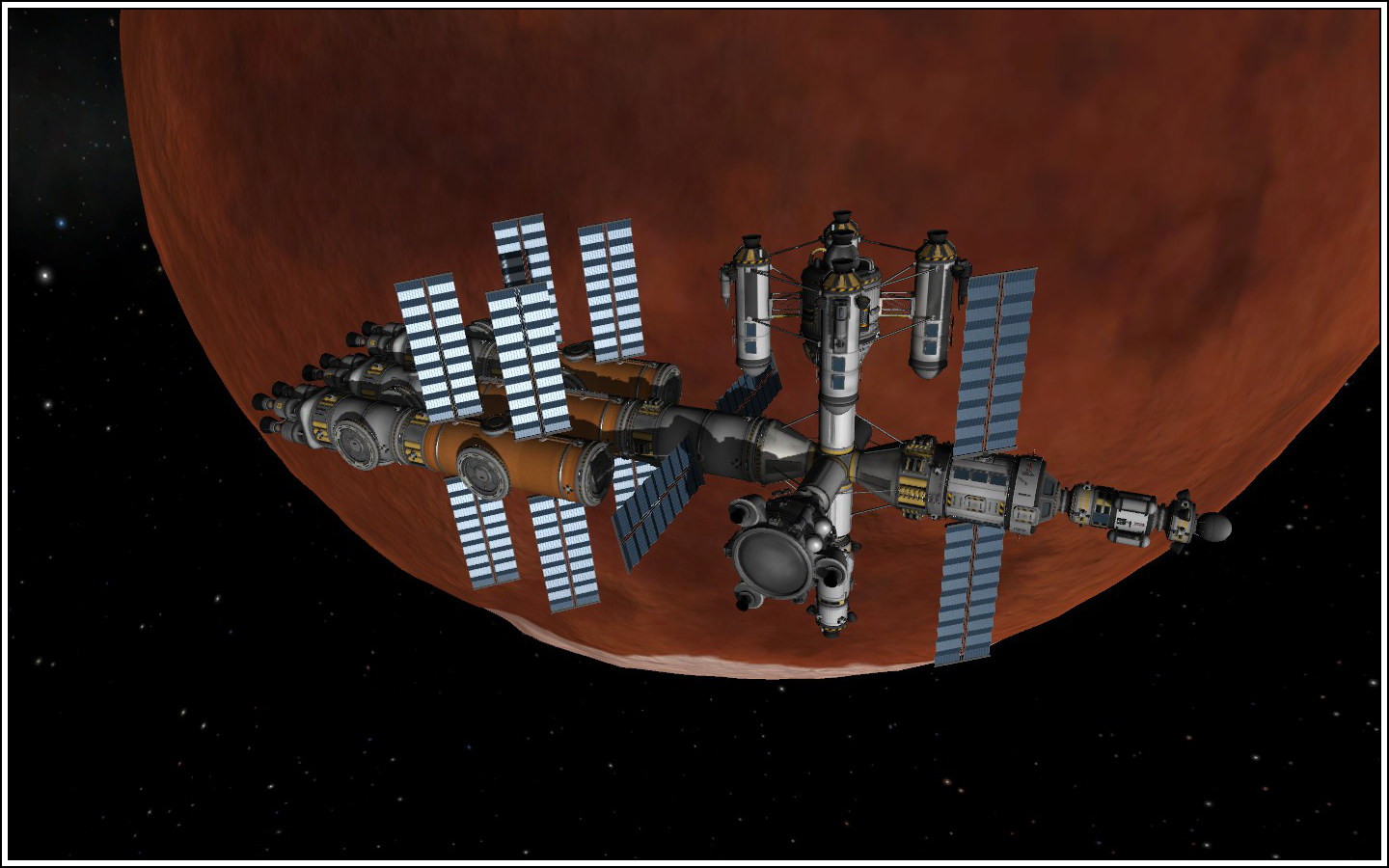 |
| The experimental version of The Wizard tested on Kerbin. |
As a small distraction from science gathering, Mission Control suggested experimenting with building an aircraft using the recently developed fission reactors and thermal turbojets. An aircraft propelled by a thermal turbojet with heat provided by a fission reactor would have the capability of flying without the need of refueling for years -- or centuries if the fission reactor was shut down and allowed to cool between flights. This alone would have made for an interesting challenge; however, living on Duna had instilled dreams of flying on its skies and The Wizard was born of these dreams.
The Wizard was a biplane design with several air intakes to help compensate for the thin atmosphere on Duna. The reactor and turbojet were positioned, unsurprisingly, at the rear of the aircraft. The experimental version of The Wizard performed exceptionally well on Kerbin.
 |
| The aircraft separating from its interplanetary transport and entering the Dunian atmosphere. |
The (Dunian) Wizard was transported to Duna using rocketry previously used to transport habitation modules. Unfortunately, The Wizard needed to be piloted to Duna by a brave, regrettably nameless Kerbal who was not guaranteed living accommodations on arrival. Nevertheless, the brave Kerbal completed the suicide mission admirably. The aircraft's fission reactor was manually activated before entering the Dunian atmosphere. Mission Control remarked on the aircraft's extreme difficulty in maneuvering at high and medium altitudes where the atmosphere was thin.
 |
| The Wizard approaching the Duna Outpost. |
Thankfully, the large maria of Duna were of sufficiently low altitude and had thick enough atmosphere to accommodate flight. At under 1500 M The Wizard controlled similar to its performance on Kerbin. The aircraft was flown successfully for approximately 500 KM between the altitudes of 500 M and 1500 M at a speed of 500 M/S. It remains to be seen how well the aircraft operates at higher altitudes outside the Duna Outpost's maria.
 |
| The Wizard parked at the Duna Outpost. |


















































